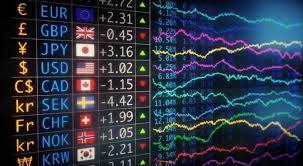
The Power and Risks of Forex Trading Leverage
In the world of forex trading, leverage is a powerful tool that can amplify both profits and losses. Understanding the nuances of leverage is essential for traders aiming to maximize their potential returns while managing risks effectively. Whether you’re new to the forex market or a seasoned trader, it’s crucial to be well-versed in how leverage works and the implications it has on your trading strategy. For a deeper dive into trading options, consider exploring forex trading leverage Trading Brokers in the Philippines.
What is Forex Trading Leverage?
Forex trading leverage allows traders to control a larger position size in the market using a smaller amount of capital. It is essentially a loan from your broker, permitting you to take on a larger position than your initial investment. For example, with a leverage of 100:1, you could control a $100,000 position with just $1,000 of your own capital. This can significantly boost your gains; however, it can also amplify losses if trades do not go in your favor.
How Does Leverage Work?
Leverage in forex trading is expressed as a ratio, such as 50:1, 100:1, or even 500:1. The first number indicates how much you can control in the market relative to your invested capital. A 100:1 leverage means, for every $1 you have, you can trade $100. To illustrate this further, if you invest $1,000 and use 100:1 leverage, you could potentially control a position size of $100,000.
The Advantages of Leverage
1. **Increased Potential for Profit**: The primary advantage of using leverage is the ability to magnify your profits. With a larger position size, even small price movements can lead to significant gains. For example, if you buy a currency pair with a leverage of 100:1 and the price moves in your favor by just a few pips, your returns can be substantial.
2. **Lower Initial Capital Requirement**: Leverage reduces the amount of capital you need to open and maintain a trading position. This means you can participate in the forex market without requiring large amounts of money upfront.
3. **Enhanced Trading Opportunities**: With leveraged trading, you can diversify your portfolio by entering multiple trades simultaneously, allowing you to explore various currency pairs and strategies without the need for large capital reserves.
The Risks of Leverage
While leveraging can provide multiple benefits, it is essential to understand its inherent risks:

1. **Increased Potential for Loss**: Just as leverage can amplify profits, it can magnify losses as well. A small adverse price movement can lead to significant losses, potentially exceeding your initial invested capital.
2. **Margin Calls**: If the market moves against your position and your account balance falls below the required margin level, your broker may issue a margin call, requiring you to deposit additional funds. If you cannot meet this requirement, your position may be liquidated at a loss.
3. **Emotional Stress**: Trading with leverage can induce emotional stress as the stakes are higher. The pressure to recover losses or maintain margin requirements can lead to poor decision-making.
Managing Leverage Risk
To effectively manage the risks that leverage brings, consider implementing the following strategies:
1. **Use Appropriate Leverage Levels**: Avoid using the maximum leverage offered by your broker. Instead, assess your risk tolerance and trading strategy to determine a leverage ratio that aligns with your objectives.
2. **Set Stop-Loss Orders**: Implementing stop-loss orders can help limit potential losses by automatically closing positions at predetermined levels. This allows for better risk management and can prevent emotional trading decisions during market volatility.
3. **Stay Informed**: Regularly educate yourself about market trends, news events, and economic indicators that may impact currency prices. Being informed enables you to make better trading decisions and adjust your leverage accordingly.
4. **Practice on a Demo Account**: Many brokers offer demo accounts where you can practice trading with leverage without risking real money. Take advantage of these accounts to familiarize yourself with how leverage impacts your trades and develop your trading strategy.
Conclusion
Forex trading leverage can be a double-edged sword. While it provides the opportunity for substantial profits with a relatively small investment, it also carries significant risks that traders must be aware of. Understanding how to effectively use leverage and implement risk management strategies is crucial for long-term success in the forex market. Always trade responsibly and consider your financial situation and risk tolerance before engaging in leveraged trading.
